Why 2024 Foil Boards are Getting Longer
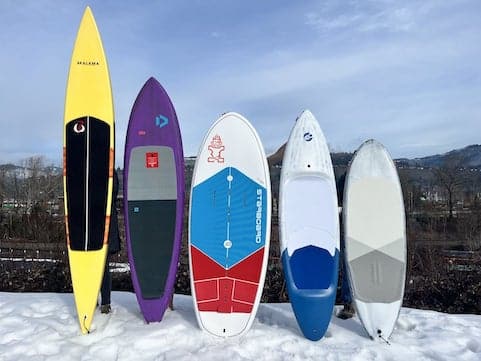
Why 2024 Foil Boards are Getting Longer
Wing boards, downwind foil boards, prone boards —
they’re all getting longer, and in dramatic fashion. What’s going on?
And what happened to short shapes that reduce swing weight?
By Eddy Patricelli and T.J. Gulizia
WHY ARE FOIL BOARDS GOING LONG?
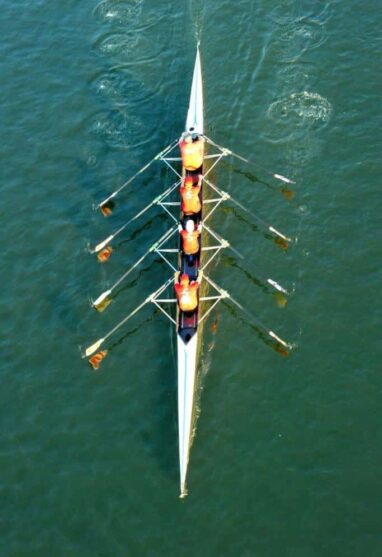
Easier Takeoffs, Friendlier Touchdowns
Think rowing scull: long, narrow, slicing and gliding. Instant acceleration, and tracking. In a foiling context, longer, narrower shapes deliver immediate water flow over the foil, vital for effortless takeoffs … and touchdowns. Nose dives on longer boards are less likely to result in falls. Their sleek noses don’t catch. Riders stay dry and save energy.
Photo: Sarasota Rowing Club
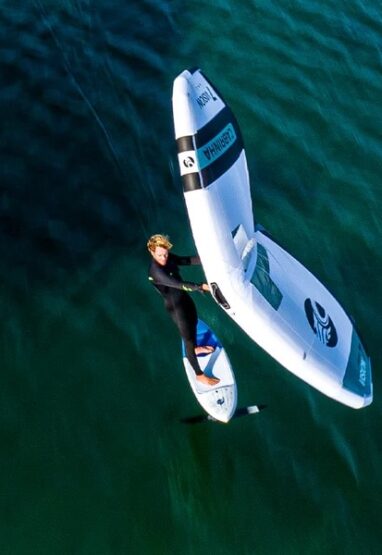
Lower Wind and Wave Minimums
The less energy required to get on foil, the less wind and wave power needed to get flying. Light wind minimums drop. Wave and wind swell riding opportunities expand. All this means that you stop crossing your fingers on your way to the water. Tease breezes and weak waves — it’s on. You’re flying high. Also, your gear quiver may shrink. More below.
Photo: Cabrinha Swift Wing Board
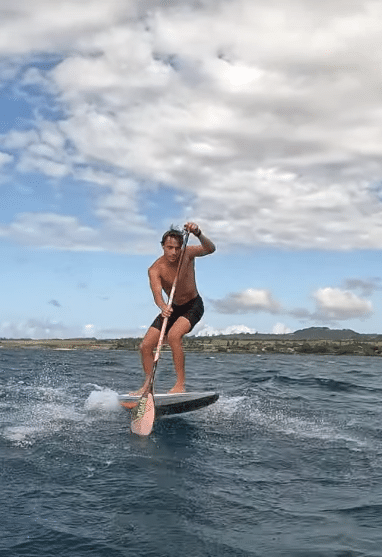
Added Paddle Power
Long, narrow shapes don’t incur much drag. Every paddle stroke is optimized for speed and glide. Boards carry momentum, without decelerating, from one stroke to the next. This makes matching a wave’s speed to catch it easier for all level riders. Here in the Gorge, SUP foilers wear capes. With longer, narrower shapes — mortals may fly too.
Photo: KT Dragonfly SUP Foil Board
QUESTIONS & CONCERNS
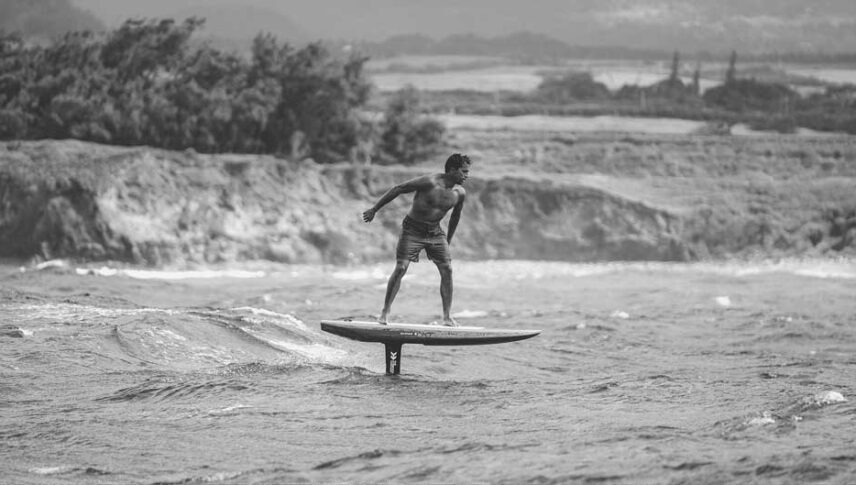
Wait, don’t short, wide shapes reduce swing weight for better flying?
They do. Short, wide shapes minimize swing weight, and continue to offer responsive flying fun. What’s evolved is foil mount tracks have moved forward on long, narrow shapes. A forward foil location moves a rider’s stance forward, which shrinks the nose area in front of them, minimizing swing weight. Additionally, long, narrow shapes are inherently svelte through the nose area. Swing weight penalties are minor.
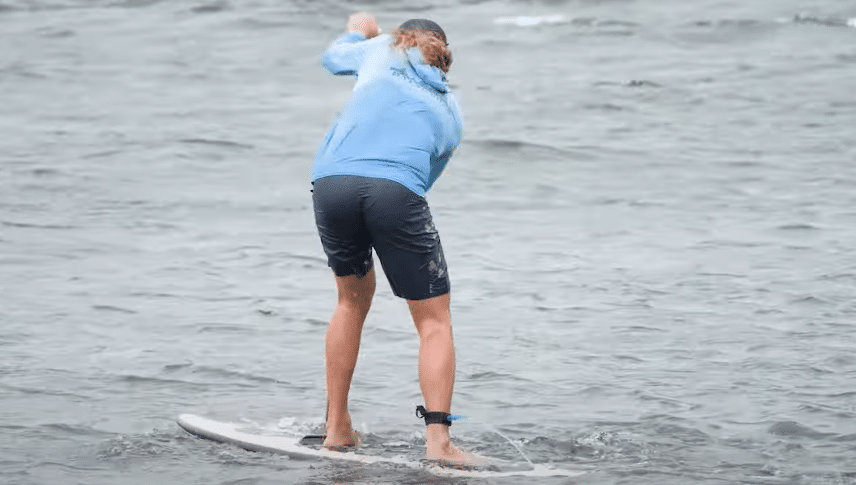
These narrow shapes look tippy …
And they can be. Side to side roll stability demands attention. But simultaneously, less rider focus is needed for pitch stability. Long shapes are exceptionally stable fore and aft when climbing aboard, accelerating onto to foil, and during touchdowns. So much so, it’s not uncommon for Big Winds customers to drop at least 10 liters of volume when transitioning from a short, wide wing board to a longer, narrower model. What size suits you? Ask us!
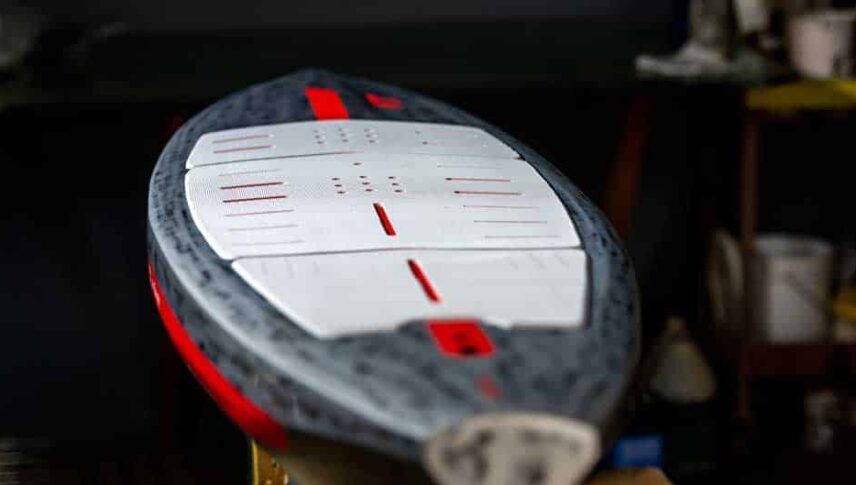
No foot strap inserts on some longer shapes? What if I want to jump?
We do not recommend jumping foil boards without foot straps. Most downwind foil boards, and light-wind performance wing boards (see below), do not offer them. Why? Weight savings. The boards are built light to minimize drag, and maximize rising and flying performance. For wingers riding these boards, cruising and swell riding should be the primary focus (not jumping).
TODAY’S LONG FOILBOARD LANDSCAPE

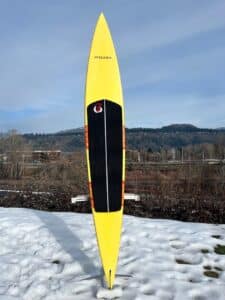
PERFORMANCE DOWNWIND FOIL BOARD
Who It’s For
Advanced to expert downwind SUP foilers; open ocean conditions
New For 2024
Towering 9’6″ models exist. The Kalama pictured is just 16″ wide. Not for the newbie. Grab your cape.
Why This Shape?
Optimized glide for catching long period swell on big waterways.
Typical Dims
8’5″ – 9’6″ long, 16 – 19″ wide, 90 – 118 liters
Beware
Specialized narrow shapes, for expert riders in specific conditions. If in doubt, opt for a wider, friendlier downwind foil board.
Pictured
Kalama Custom, 9’0″ x 16″, 92 liters, 11.75 pounds
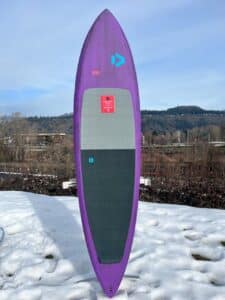
DOWNWIND FOIL BOARD
Who It’s For
Downwind SUP foilers, wannabes and light-wind wing foilers
New For 2024
More models. As more wingers reach for paddles, these boards let them keep winging. More below.
Why This Shape?
Blends glide with stability for mere mortals entering river bumps and more.
Typical Dims
6’10” – 8’5″ long, 19 – 23″ wide, 95 – 140 Liters
Quiver Shrinker
For light-wind winging, these easy rising shapes let riders downsize. A 5.5 can be a “big” light-wind wing. Ditto for a 1200 cm2 front foil wing.
Pictured
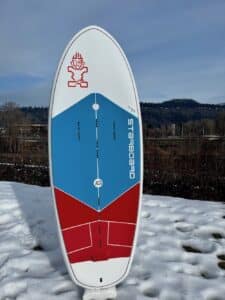
ENTRY LEVEL WING FOIL BOARD
Who It’s For
Beginner to intermediate wing foilers; light-wind locations
New for 2024
Longer, and narrower. In 2023, a 6’4″ Starboard Take Off wing board was 130 liters. This year, the 130 liter model is a 7’0″long.
Why This Shape?
Stability meets effortless early rising, and snag-free touchdowns. Easy to climb aboard, and stay upright.
Typical Dims
5’7″ – 7’0″ long, 23 – 31″ wide, 110 – 150 liters
Smoother Learning Curve
Improved rising efficiencies allow smaller wings for learning. Smaller wings reduce wing tip snags, every newcomer’s nightmare.
Pictured
Starboard Take Off Lite Tech, 6’4″ x 23″, 110 liters, 19 pounds
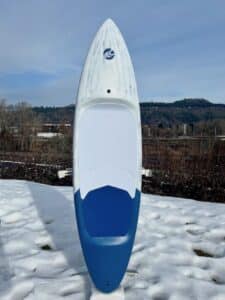
LIGHT WIND PERFORMANCE WING FOIL BOARD
Who It’s For
Intermediate to expert real-world wingers, tease breezes and gear minimalists.
New for 2024
Everything. A new board category, inspired by downwind foil boards. Enjoy light winds without pumping up big wings.
Why This Shape?
The early rising of downwind foil boards, but more compact for dedicated wingers who don’t plan to paddle.
Typical Dims
5’8″ – 6’9″ long, 21 – 25″ wide, 85 – 110 liters
Get More from Less
Similar to downwind foil boards, these sleek shapes enable smaller wings, both in hand and under foot.
Pictured
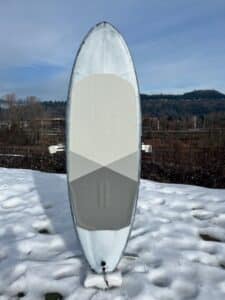
MID LENGTH PRONE/WING FOIL BOARD
Who It’s For
Advanced to expert prone surf foilers; advanced to expert wing foilers
New for 2024
Longer and narrower, which opens big doors to one board quivers for prone foiling and winging in the surf. More below.
Why This Shape?
Improved paddling speed for catching weak waves, or giant ones. Likewise, that glide allows smaller wings preferred for wave riding.
Typical Dims
5′ – 6′ long, 16 – 20″ wide, 45 – 85 liters
One and Done
Prone foiling in surf, prone foiling downwind, wing foiling — for experienced foilers, one board to rule them all.
Pictured
Unifoil Quiver Killer, 5’6″ x 20″, 55 liters
3 WAYS LONG FOIL BOARD TRENDS
WILL CHANGE THE WAY YOU RIDE IN 2024
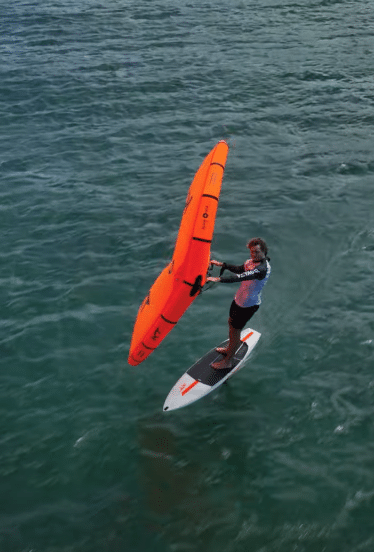
Less Boards
Downwind SUP foil boards double as insanely efficient light-wind wing boards. If it’s windy, grab your paddle. If it’s not, grab your wing. One board. Done. Prone foil boards excel in the surf, ride wind swell, and offer wing foiling fun. 3-n-1 and done. Pack less. Ride more.
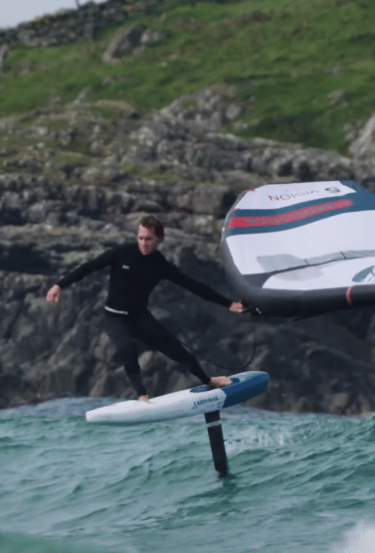
Smaller Wings
A 5.5 meter “light-wind” wing. A 1200 cm2 “big” front foil wing. Last summer, lots of Gorge wingers ditched their wing for a paddle, and jumped on a downwind SUP foil board, only to realize their new board was a light-wind winging machine with a kicker: Less need for big wings.
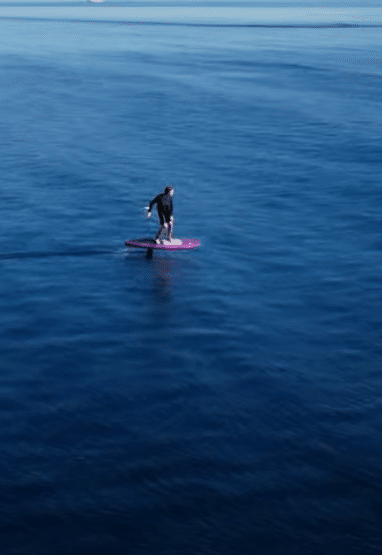
More Water Time
Lower wind and wave minimums. Smaller, easier handling handheld wings. Both enable more time on the water. Both go far in saving rider energy. It’s hard to imagine two more vital components to progression and fun. Longer sessions, and more of them. Let’s go!
Eddy Patricelli has been downwind SUP foiling lots this winter, and says winter is the best time to learn. See why …
T.J. Gulizia is considered the Gorge’s pioneer of downwind SUP foiling. He overseas wing, kite, and SUP departments at Big Winds.
Both he and Eddy are co-owners. Meet our team.

